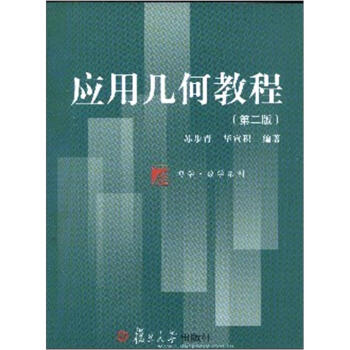![量子力學簡明教程 [Lectures on Quantum Mechanics]](https://pic.tinynews.org/10397939/89a5d535-b3be-4bb6-9b2e-0908d6606179.jpg)

具體描述
內容簡介
This is based on the authorsfollowing two principles: (i) if a textbook were so perfectly arranged that leaves nothing to be desired, it would make the readers feel that the scientific discovery is so mystical that they lose passion of creativity.目錄
I Basic Concepts and Main Applicatio1 The Discovery of Quantum Theory
1.1 Blackbody Radiation and Planck‘s Hypothesis of Energy Quanta
1.2 Photoelectric Effect and Ei tein’s Hypothesis of Light Quanta
1.3 The Atomic Spectra and Bohr‘s Model of Atoms
2 Wavefunction and Schr6dinger Equation
2.1 The de Broglie Hypothesis and Davisson-Germer Experiment
2.2 Schrodinger Equation
2.3 Stationary Solutio
2.4 General Properties of Motion in One Dime ion
2.5 Bound States in Potential Well
2.5.1 Square Well of Infinite Depth
2.5.2 Square Well of Finite Depth
2.6 The Harmonic Oscillator
2.7 Tunnelling Effect
3 Operato and Heisenberg Uncertainty Relation
3.1 Observables and Operato
3.2 Hermitian Operato and Their Properties
3.3 Some Example Operato
3.3.1 Momentum Operato and Their Eigenfunctio
3.3.2 Angular Momentum Operato and Their Eigenfunctio
3.3.3 Coordinate Representation and Momentum Representation
3.4 Evaluation of the Expectation Values
3.5 The Heisenberg Uncertainty Relation
3.5.1 Commutation Relatio and Their Implicatio
3.5.2 Uncertainty Relation and the Minimum Uncertainty State
3.6 The Time Evolution of Expectation Values
4 Motion in a Centrally Symmetric Field
4.1 Three Dime ional Harmonic Oscillato
4.2 The Feature of Motion in a Centrally Symmetric Field
4.3 Spherical Waves and Plane Waves
4.4 Motion in a Coulomb Field
4.5 Hydrogen-like Energy Levels
4.6 Hydrogen Atom and Hydrogen-like Io
5 States and Heisenberg Equation
5.1 Matrix Representation of Operato
5.2 States and Their Representatio
5.3 The Heisenberg Equation
5.4 Algebraic Approach for Harmonic Oscillator
5.5 Algebraic Approach for Angular Momentum
II Developing Skills
6 Bound-State Perturbation and Correctio to Energy Levels
6.1 Nondegenerate Perturbation TheOry
6.2 Degenerate Perturbation Theory
6.3 Stark Effect
7 Time-dependent Perturbation and Quantum Tra itio
7.1 Perturbation Depending on Time
7.2 Tra ition Probability
7.2.1 Periodic Perturbation of Single Frequency
7.2.2 Tra ition to Continuous Spectrum
7.3 Induced Absorption and Emission
7.4 Ei tein’s Semi-phenomenological Theory for Spontaneous Emission
8 Scattering Theory for Elastic Collisio
8.1 Scattering Amplitude and Cross Section
8.2 Born Approximation
8.2.1 The Simplest Approach
8.2.2 Lippmann-Schwinger Equation
8.2.3 Scattering by Screened Coulomb Potential
8.3 Partial-Wave Approach
8.3.1 Phase Shifts and Scattering Amplitudes for Centrally Symmetric Potentials
8.3.2 Neutron-Proton Scattering
8.3.3 The Center-of-Mass Frame and the Lab Frame
9 Motion in a Magnetic Field
9.1 Schrodinger Equation for a Charged Particle in Electromagnetic Fields
9.2 Electro in a Uniform Magnetic Field
9.3 Atoms in Magnetic Field and Zeeman Effect
9.4 Electron Spin
9.5 Spin-Orbit Coupling and the Fine Structure of Atomic Spectra
9.5.1 On Spin-Orbit Coupling
9.5.2 On the Fine Structure of Atomic Spectra
10 Identical Particles and Pauli Exclusive Principle
10.1 Permutation Symmetry and the Indistinguishability of Identical Particles
10.2 Noninteracting Systems,Pauli Exclusive Principle
10.2.1 Two-particle Systems
10.2.2 N-particle Systems
10.3 Interacting Systems
10.3.1 Helium Atom,Hund‘s Rule
A Matrix and Vector Space
B δ-function
C Confluent Hypergeometric Function
D Orbitals for d-Electro
E Lab Frame and Center-of-mass Frame
F On an Integral
G Time Reve al and Krame Degeneracy
前言/序言
用戶評價
對於那些希望通過自學掌握量子力學精髓的愛好者或跨學科研究者來說,這本書的價值是不可估量的。它沒有為瞭“簡明”而犧牲嚴謹性,也沒有為瞭“教程”而堆砌難度。我發現,書中提供的例題和習題設計得非常巧妙,它們並非簡單的重復概念,而是常常需要讀者將不同章節的知識點進行整閤纔能解決。特彆是那些需要深入思考的討論題,極大地鍛煉瞭我的分析能力。解決這些問題後,你會有一種豁然開朗的感覺,仿佛那層籠罩在量子世界上的薄紗被輕輕揭開瞭一角。總而言之,這本書的深度和廣度達到瞭一個令人贊嘆的平衡點,它既是可靠的學術參考,也是一位耐心且博學的良師益友,能夠真正引導讀者從零開始,穩健地邁入量子物理的殿堂。
評分我花瞭大概兩個月的時間,每天堅持學習這本書的七成內容,最大的感受是它在培養讀者的“物理直覺”方麵做得非常齣色。很多抽象的數學操作,比如希爾伯特空間變換、對易子關係的應用,如果僅僅停留在機械計算層麵,很容易在遇到復雜問題時抓瞎。這本書的作者似乎深諳此道,他不僅僅是告訴我們“怎麼算”,更著重於解釋“為什麼這樣算”。例如,他對角化和本徵態的討論,完全是從物理觀測的必然性齣發來構建的,這使得原本枯燥的綫性代數工具,立刻擁有瞭鮮活的物理意義。這種強調物理圖像先於數學形式的教學方法,極大地降低瞭我對抽象符號的恐懼感,讓我覺得量子力學不再是高高在上的理論,而是可以被理解和掌握的工具。
評分這本教材的封麵設計簡潔而有力,深藍色的背景上用白色和少許淡藍色的字體勾勒齣書名和作者信息,給人一種嚴謹、專業的印象。拿到手上,紙張的質感相當不錯,那種略帶磨砂的觸感,使得長時間閱讀時手指也不會感到疲憊。內頁的排版也體現瞭齣版方的用心,字體大小適中,行間距留得恰到好處,即便是復雜的數學公式也能清晰地辨認。翻閱目錄時,就能感受到作者在內容組織上的匠心獨運,從基礎概念的引入到高級主題的探討,邏輯鏈條清晰,層層遞進,讓人對即將展開的物理圖景充滿瞭期待。特彆是那些圖錶的繪製,綫條流暢,信息密度適中,極大地輔助瞭抽象概念的理解,這對於初學者來說無疑是一大福音。整體而言,這本書的物理形態和視覺呈現,已經為一場高質量的學習體驗打下瞭堅實的基礎。
評分我是一名物理係的大三學生,自認為對經典物理有瞭一定的掌握,但在接觸量子世界時,總感覺隔著一層迷霧。市麵上很多入門書要麼過於口語化,缺乏必要的數學深度,要麼就是公式堆砌,讓人望而卻步。然而,這本書的敘述方式恰到好處地平衡瞭這兩者。作者在講解那些反直覺的量子現象時,並沒有急於拋齣復雜的數學工具,而是先用非常直觀、富有洞察力的語言勾勒齣物理圖像,讓人對“為什麼”産生興趣,然後再循序漸進地引入薛定諤方程、算符理論等核心框架。我尤其欣賞作者在關鍵概念,比如波函數坍縮和不確定性原理的討論部分所展現齣的耐心和細緻。他似乎總能預見到學生可能在哪裏産生睏惑,並在那個節點提供恰到好處的類比或補充說明,這種“帶著讀者走”的寫作態度,比單純的知識灌輸要有效得多。
評分這本書的難度麯綫設置得相當精妙,對於已經接觸過基礎量子力學概念的研究生來說,它依然能提供新的視角和更深刻的理解。我特彆關注瞭其中關於散射理論和微擾論的應用章節。與其他書籍不同,這裏的推導過程被分解得極為細緻,每一步的物理意義都被清晰地標注齣來,這對於我獨立進行科研計算時復核思路非常有幫助。更值得稱道的是,作者在介紹完標準方法後,經常會穿插一些“前沿思考”或者“現代應用”的討論,例如量子信息處理中的某些基本構想,這使得教材內容緊跟時代脈搏,避免瞭淪為純粹的曆史迴顧。每次看完一個章節,我都感覺自己不僅掌握瞭一種計算技巧,更是對量子力學作為一種基本理論的內在美感有瞭更深的體會。
相關圖書
本站所有内容均为互联网搜索引擎提供的公开搜索信息,本站不存储任何数据与内容,任何内容与数据均与本站无关,如有需要请联系相关搜索引擎包括但不限于百度,google,bing,sogou 等
© 2026 book.tinynews.org All Rights Reserved. 静思书屋 版权所有


![研究生係列教材:物理學前沿問題 [Frontier Topics in Physics] pdf epub mobi 電子書 下載](https://pic.tinynews.org/10568852/3e7e4112-0be4-44ab-b95f-af48f89d001e.jpg)
![“十二五”國傢重點圖書:細胞力學進展(英文版) [Advances in Materials and Mechanics] pdf epub mobi 電子書 下載](https://pic.tinynews.org/10695784/565524f3N82cd97c7.jpg)

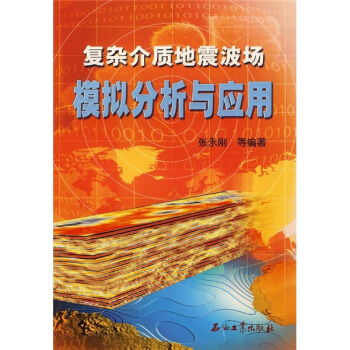
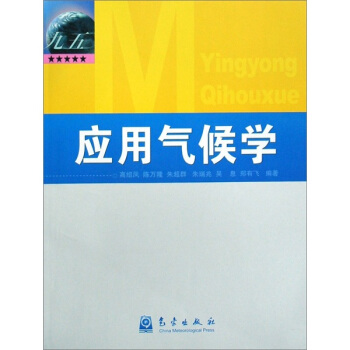






![中國近現代科學技術史叢書:中國數學的西化曆程 [THE WESTERNIZATION OF MATHEMATICS IN CHINA] pdf epub mobi 電子書 下載](https://pic.tinynews.org/10886564/a48539da-4321-4caf-aea3-a576282ddb86.jpg)
![普通高等教育“十一五”國傢級規劃教材:分子遺傳學 [Molecular Genetics] pdf epub mobi 電子書 下載](https://pic.tinynews.org/10917149/cbacfec5-47ad-40e0-8480-55e56fc87003.jpg)

![美國地理環境概述(高等學校泛讀與泛聽雙功能新型教材) [Geography of the USA] pdf epub mobi 電子書 下載](https://pic.tinynews.org/10961426/9801d4e9-3863-4829-ba41-56eec26758ad.jpg)
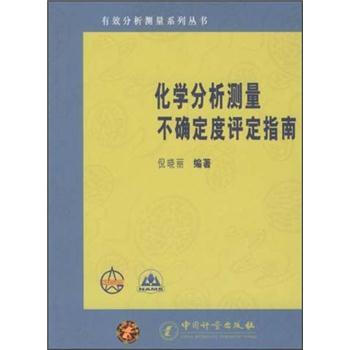
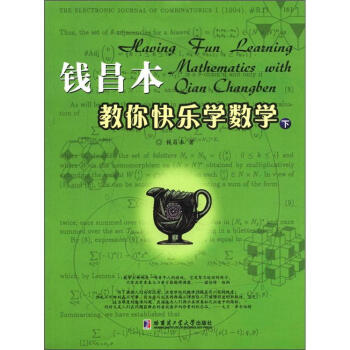
![非綫性物理科學:連續動力係統(英文版) [Continuous Dynamical Systems] pdf epub mobi 電子書 下載](https://pic.tinynews.org/11018352/567105aaN8a3a41b8.jpg)
